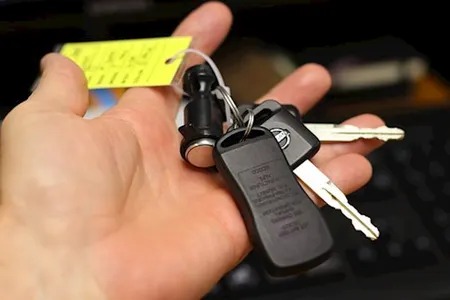6 Winter Car Care Tips Everyone Should Know
If you live in an area that never experiences snow or adverse winter weather conditions, then this isn't an article that means much to you. However, if you are one of the 220 million Americans that experience freezing temperatures every year, here are six things to look at when preparing your vehicle for winter.
1. Tires, Tires, Tires!!!
Your tires are the only part of your vehicle that keep you connected to the road ahead, so failing to pay attention to them or make sure you are using the proper tires could have catastrophic consequences. Having proper tires with good tread could make all the difference between sliding off the road into a snowbank vs getting home safely to your family. When choosing tires, you should look to put either all-season tires on your vehicle or snow tires that you can put on our car or truck when the weather turns bad.
2. Check your tire pressure
We’ve all jumped in our vehicles in the fall and seen the tire pressure light flashing after a cool evening. Cold temperatures cause tire pressures to drop, so it is important to constantly monitor your tire pressure to make sure they are properly inflated. According to Firestone, you can expect your tire pressure to drop 1-2 PSI for every 10 degrees drop in temperature.
3. Add (and carry) windshield wiper fluid
There are two times that I primarily use my windshield washer fluid. Bug season and snow season. Out of those two times, the one that I would never want to get caught without washer fluid is snow season. Wiper fluid can quickly and easily clear your windshield from the slushy grime being kicked up from the vehicle in front of you. Without being able to clear your windshield of the winter road grime will quickly lead to low visibility in already bad driving conditions. I would always recommend making sure you have enough wiper fluid in your vehicle, including a back up bottle tucked away in your truck for emergency use.
4. Check your battery
Cold weather can wreak havoc on older car batteries. According to Industrial Battery Products, car battery capacity can drop nearly 20% at freezing temperatures and can even drop up to 50% when temperatures are below freezing. Another important factor to pay attention to is your car battery’s Cold Cranking Amps. CCA’s are more important if you live in a colder climate. The colder the temperatures, the more strain it takes on a battery to start your vehicle. Therefore, it is important to make sure your battery has adequate CCA.
5. Replace your windshield wiper blades
It is a safe assessment to say that most folks wait entirely too long to replace their wiper blades. According to Rain-X, you should replace your wipers every 6 – 12 months, while never allowing your wipers to be on your vehicle more than a year after installation. There are several indicators for when your wipers should be replaced: including skipping, streaking, squeaking, and splitting. If you are experiencing any of these, you should consider replacing your wipers immediately. There are a number of conditions that can cause wipers to deteriorate no matter where you live. UV light from the sun, salt water, ice build up on windshields and dirt/dust to name just a few. The good news is that wipers are fairly inexpensive to purchase and only a take a few minutes to install.
6. Carry an emergency kit with you
No matter where you live, it is important to carry some sort of emergency kit. If you Google ‘Winter car emergency kit’, you will be inundated with more options than you can wrap your head around. Some of more important things to have in your kit would include jumper cables, flares, first aid kit, flashlight, blanket, ice scraper, and a mobile tire inflator. Think of these items as personal safety insurance. You’d rather have it and not need it, than need it and not have it.
As always, if you need a new Chevrolet or any pre-owned vehicle, please don't hesitate to call Jimmy, AKA The Ohio Car Guy, at 614.432.5509!









